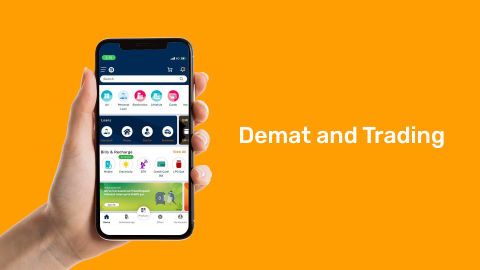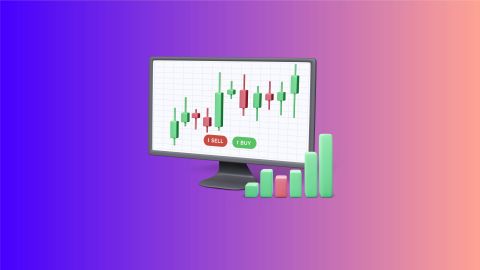Factors affecting option premium calculation
The main factors affecting option premium calculation are:
1. Intrinsic value and time value
Intrinsic value is the gap between the option's strike price and the underlying asset's current price. Time value is the excess of the option's price over its intrinsic value. The interplay of these factors influences the overall premium.
2. Implied volatility
Higher volatility in the underlying asset leads to an increase in the option premium. This reflects the market's expectation of significant price movements, making the option more valuable.
3. In-the-money status
The option's relationship to the underlying security's price impacts the premium. In-the-money options have higher premiums, while out-of-the-money options have lower premiums, creating a direct correlation.
4. Time until expiration
The duration until the option's expiration affects the premium. Longer expiration periods result in higher premiums, reflecting the extended time for the option to potentially move in a favourable direction.
5. Interest rates
Interest rates influence option premiums. Higher rates reduce call option premiums and increase put option premiums, while lower rates have the opposite effect. This reflects the opportunity cost of tying up capital in options.
6. Dividends
Dividend payments impact option premiums. Higher dividends lead to lower call option premiums and higher put option premiums, while lower dividends have the opposite effect. This reflects the potential income derived from holding the underlying security.
Options premium formula
The calculation of a premium in option trading involves three crucial components: intrinsic value, time value, and volatility value.
- Intrinsic value
For a call option, intrinsic value is the positive difference between the current stock price and the option's strike price. In the stock market example, if an investor holds a call option with a strike price of Rs. 50 and the stock is currently trading at Rs. 60, the intrinsic value would be Rs. 10 (Rs. 60 - Rs. 50).
- Time value
Time value is the premium that investors are willing to pay for the time remaining until the option expires. If the time value of the call option is Rs. 5, it signifies the value investors place on the opportunity for the stock price to move favourably within the given time frame.
- Volatility value
Volatility value considers the historical price fluctuations of the underlying asset. Higher volatility implies a greater likelihood of significant price movements, making the option more valuable. If the volatility value is Rs. 2, it reflects the perceived uncertainty and potential for substantial price swings.
Options premium formula: Option premium= Intrinsic value + Time value + Volatility value
How is it calculated?
Now, let us understand how premium is calculated in options using the above formula with an example given below:
Option premium = Rs. 10 + Rs. 5 + Rs. 2 = Rs. 17
In this scenario, an investor holding a call option with a strike price of Rs. 50, the current stock price of Rs. 60, a time value of Rs. 5, and a volatility value of Rs. 2, would calculate the option premium as Rs. 17. This holistic approach, encompassing intrinsic value, time value, and volatility value, provides investors with a comprehensive understanding of an option's fair market price, aiding them in making informed investment decisions.
Black-Scholes option pricing model
The Black-Scholes option pricing model is a mathematical formula widely used to calculate the theoretical price of options contracts. Here is a breakdown of its components:
1. Key factors
The model incorporates the option price, strike price, interest rate, underlying security price (S), expiration time (t), and implied volatility (IV). Implied volatility, though not directly observable, is a critical input for accurate pricing.
2. Calculation formula for call option (C)
C = S ⋅ N (d1) – X ⋅ e −rt ⋅ N (d2)
3. Calculation formula for put option (P)
P = X ⋅ e−rt ⋅ N (−d2) − S ⋅ N (−d1)
Where,
- S: Underlying asset price
- X: Strike price
- t: Expiration time
- r: Interest rate
- N(d1) and N(d2): Cumulative standard normal distribution functions
4. Option greeks
These are delta, vega, gamma, rho, and theta. They quantify the sensitivity of option prices to changes in underlying price, volatility, interest rate, and time to expiration. These greeks collectively form the intangible part of intrinsic value, providing valuable insights for risk management.
The Black-Scholes model enables investors to estimate the fair market value of options by considering multiple factors. It revolutionised option pricing, introducing a systematic approach to valuing financial derivatives and has become a foundational tool in financial markets.
Option premium vs strike price
Explore the key differences between the option premium and strike price:
Criteria
|
Option premium
|
Strike price
|
Definition
|
The price paid by the buyer to acquire an option
|
The predetermined price at which the option can be exercised (buy or sell the underlying asset)
|
Calculation
|
Determined by various factors including intrinsic value, time value, and implied volatility
|
A fixed value is set when the option is created, agreed upon by the buyer and the seller
|
Dynamic nature
|
Changes continuously based on market conditions, option type, and underlying asset movement
|
Remains constant throughout the option's life until expiration
|
Influencing factors
|
Intrinsic value, time value, volatility, and other market variables
|
Primarily influenced by the current market price of the underlying asset and the agreed-upon option terms
|
Role in profit/loss
|
Affects the cost of entering the option contract and potential profit or loss
|
Determines the level at which the option holder can buy or sell the underlying asset, impacting potential profit or loss
|
Observable value
|
Observable and can be quoted in the market in real time
|
Fixed and agreed upon at the time of option creation
|
Connection to market price
|
Linked to the current market price of the option
|
Connected to the market price when the option is exercised, determining the execution price
|
Role in exercise
|
Not directly involved in the exercise of the option
|
Integral to the exercise process, defining the transaction price when the option is exercised
|
Dynamic response to market changes
|
Responds dynamically to changes in market conditions and option type
|
Remains static, providing a reference point for option holders when deciding to exercise
|
Conclusion
The option premium, dynamically influenced by factors like intrinsic value, time value, and implied volatility, represents the cost of entering an option contract and holds the key to potential profits or losses. On the other hand, the strike price, a fixed and agreed-upon value, determines the level at which an option holder can buy or sell the underlying asset. As investors navigate these critical elements, understanding their roles in pricing and execution becomes paramount for making informed decisions in trading.
Related Articles:
What is Doji Candlestick Pattern
What is Fair Value
Know about MCX holidays
What is Futures and Options
Know about BSE holidays
What is Primary and Secondary market
What is Bull Market





